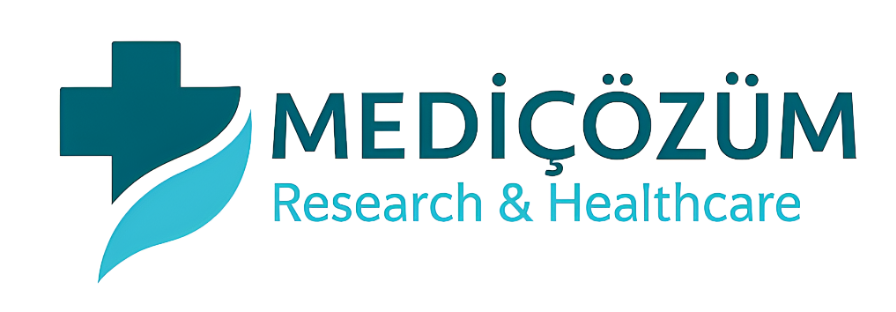Assessment of Supermolecule Profile Parameters among Type II Diabetic Patients: A Prospective Study
DOI:
https://doi.org/10.21276/xggbmb23Keywords:
Diabetes, BAI, BMI, WC, HCAbstract
Background: Diabetic patients have a bigger probability of getting dyslipidemia, high blood pressure, and fleshiness. This manner of dyslipidemia remains for the most part unknown or diagnosed late and beneath treated in high risk populations, like patient with type- two polygenic disorder. The aim of the study is to research the connection between body fluid lipid profile in type-2 diabetic patients.
Methods: A cross sectional study done on one hundred patients with kind two polygenic disorders. The participants were already diagnosed as kind two diabetics and undergoing treatment. in line with NCEP-ATPIII guideline, hypercholesteremia is outlined as TC>5.2 mmol/l, high LDL- C once price >2.6 mmol/l, hypertriglyceridemia as TG >3.8 mmol/l and low HDL-C once price <1.0 mmol/l. Dyslipidemia was outlined by presence of 1 or quite one abnormal body fluidlipidconcentration.Diabetes disorderwasoutlinedas American diabetesAssociation (ADA) criteria.
Results: ‘The mean age of the males (58.1±2.3) weren't statistically completely different (p=0.6402) from that of the females (57.1±1). The mean waist circumference (WC), hip circumference (HC), Body adiposity Index (BAI) and Body Mass Index (BMI) of the feminine subjects were considerably high as compared with the male subjects (p=0.0008, 0.0002, 0.000 and 0.0002 respectively). Among the diabetic people, 59 (59%) people had just one abnormal lipid profile parameter, 34 (34.0%) had 2 abnormal lipid parameter and 27 (27%) people had quite two abnormal lipid profile parameters.
Conclusion: We tend to terminate that early identification is accomplished through comparatively cheap blood testing and will be utilized for screening bad diabetic patients for timely intervention with lipid lowering medicine.
Downloads
References
American Diabetes Association. Nutrition principles and recommendations in diabetes (Position Statement). Diabetes Care,2004; 27(Suppl. 1), S36–S46.
Fauci S.A. Harrison’s Principles of Internal Medicine. 17th Edition. United States of America. The McGraw Hill Company, 2008.
American Diabetes Association. Dyslipidemia management in adults with diabetes. Diabetes Care,2004; 27(Suppl. 1), S68–S71.
Masram S.W., Bimanpalli M.V. and Ghangle S. Study of Lipid Profile and Glycated Hemoglobin in Diabetes Mellitus. Indian Medical Gazette,2012. 5. W.H.O Consultation. Definition, diagnosis and classification of diabetes mellitus and its complications. Part 1: diagnosis and classification of diabetes mellitus. Geneva: World Health Organisation,1999 ; Report no.
2.
Folsom A.R., Chambless L.E., Duncan B.B. and Gilbert A.C. Pankow JS.
Prediction of coronary heart disease in middle-aged adults with diabetes.
Diabetes Care 2003; 26: 2777-84.
Patiakas S. and Charalampous C. "Correlation Between The Glycated
Hemoglobin (Hba1c) Level, The Arterial Blood Pressure (AP) And The Body Mass Index (BMI) In Diabetic Patients, And Evaluation Of Its Utility As A C: Pp.17.170." Journal of Hypertension,2010; 28: e300.
Sushil M.I., Muneshwar J.N., Khan S.T. To Study Body Mass Index, Waist Circumference, Waist Hip Ratio,Body Adiposity Index And Lipid Profile Level In Patients With Type-2 Diabetes Mellitus. IOSR Journal of Dental and Medical Sciences (IOSR-JDMS). 2015;Volume 14, Issue 5 Ver. III, PP 98-101.
Ram V. M., Prajwal G., Pramod P. R., Prashant R, Khelanand P. S., Dipendra R. P. and Prabin G. Association between glycaemic control and serum lipid profile in type 2 diabetic patients: Glycated haemoglobin as a dual biomarker. Biomedical Research 2011; 22 (3): 375-380.
Selvin E., Coresh J., Wattanakit K., Steffes M.W. and Sharrett R. HbA1c and Peripheral arterial disease in diabetes, The ARIC Study. Diabetes Care,2006; 29: 877-82.
Gottsater A., Landin-Olsson M., Fernlund P., Lernmark A. and Sundkvist G. Beta-cell function in relation to islet cell antibodies during the first 3yr after clinical diagnosis of diabetes in type II diabetic patients. Diabetes Care,1993;16:902–910.
Durrington P. and Sniderman A. Epidemiology and pathophysiology. In: Hyperlipidemia. Durrington P, Sniderman A (Eds). Health Press, Oxford, UK,2002: 71–89.
Downloads
Published
Issue
Section
License
Copyright (c) 2024 International Archives of BioMedical and Clinical Research

This work is licensed under a Creative Commons Attribution-NonCommercial 4.0 International License.
Authors are required to sign and submit the completed “Copyright transfer Form” upon acceptance of publication of the paper. This is determined by a publishing agreement between the author and International Archives of Biomedical and Clinical Research. These rights might include the right to publish, communicate and distribute online. Author(s) retain the copyright of their work. International Archives of Biomedical and Clinical Research supports the need for authors to share, disseminate and maximize the impact of their research.












